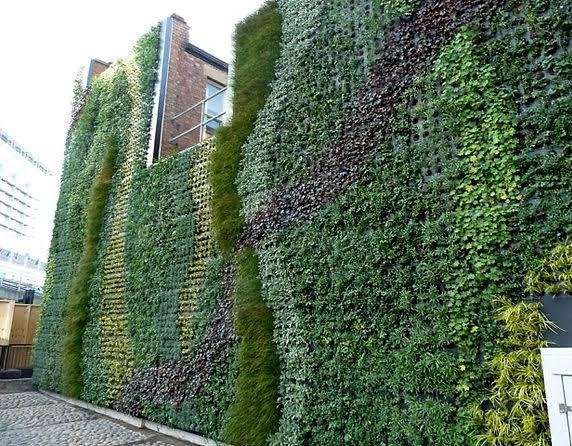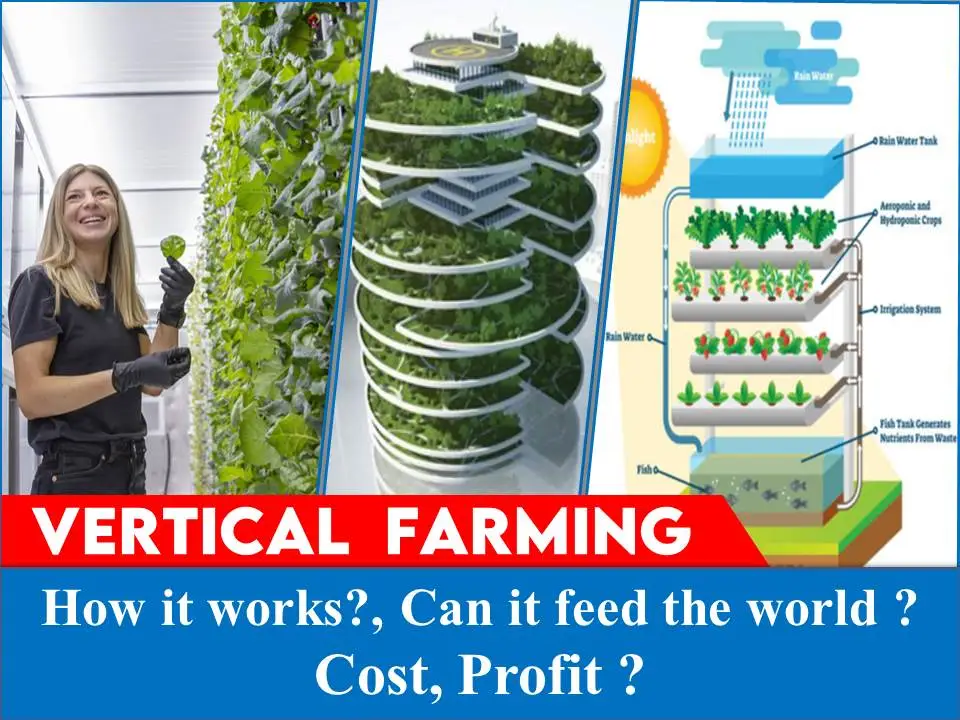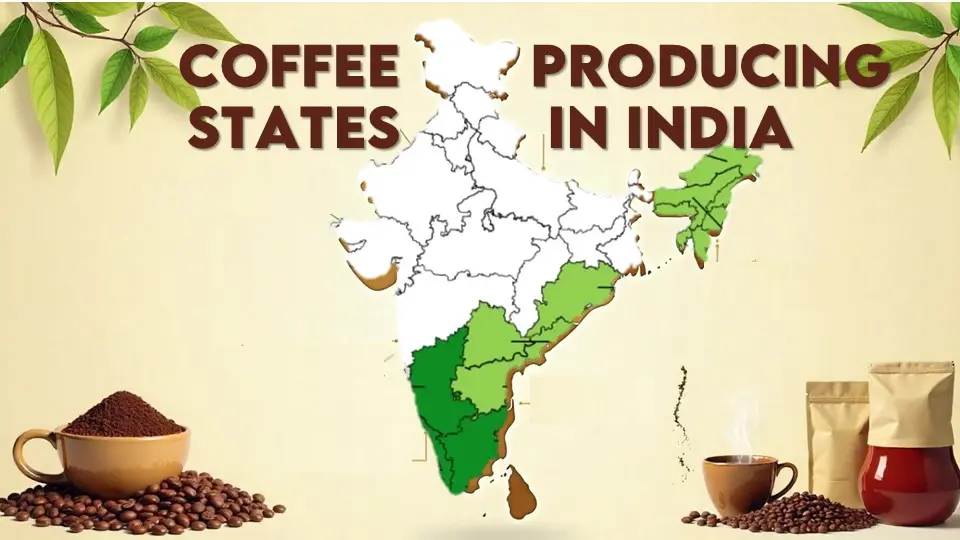‘Vertical farming’ is a groundbreaking innovation, which offers a sustainable solution to combat agonizing hunger while preserving the environment with better space utilisation. It has revolutionized agriculture from being a rural activity to urban aesthetics. Today, it has a lucrative market that could be easily exploited with little training. Metropolitan cities like Bangalore and Delhi have already installed vertical farming structures all over the metropillars, flyovers, buildings, etc, to improve their air quality index and have shown amazing results. If you are interested in creating your vertical farm and how it works, then this article is for you. We will also discuss the benefits and challenges of vertical farming.
How Vertical Farming Works?
In modern context, Vertical Farming is defined as, ‘an activity of growing crops in many layers, one above the other, inside a building or under the ground, often in a specially controlled environment’. It doesn’t need soil to sustain, instead, the soil is replaced with other growing mediums like cocopeat, perlite, hemp fibre, etc, which makes nutrient transfer easy.
The essential components of vertical farming are:
Vertical Stacking
Crops are grown in stacked layers, shelves, or towers, making efficient use of vertical space. However, the final structure depends upon the building area and resources available.
Controlled Environment
Conditions such as temperature, humidity(for most of the plants it lies between 40-50%), light, and CO2 levels are precisely controlled to create an optimal environment for plant growth. Through a controlled environment system, we can plan out these things efficiently. It also allows us to have good control over the quantity and quality of produce.
Artificial Lighting
LED lights provide the required spectrum of light for photosynthesis as stacking prevents the sunlight from reaching the lower layers. Except for the green facade walls, you might have seen in cities, that receive enough sunlight and only a few species of ornamental plants that require less are used in it; all the other types of vertical farming require artificial lighting. The parameter of choosing a lighting system depends upon the type of crop grown and the energy intake by the system.
Nursery Stations
It is a place for growing young seedlings. The plants are grown here until they reach the appropriate weight and height. This area is separated from larger crops and takes place in two forms, in separate cabinets or a completely separate room in case of larger crops. This separation at early stages prevents the exposure of diseases and insects attached to planting material from the main cultivating area.
Irrigation System
vertical farming is all about soilless irrigation, and it is suggested to use an automated system that can supply nutrient-rich water directly to the roots. To avoid any kind of disease or pest infestation, make sure to use a clean source of water for irrigation. The temperature, pH and nutrient levels in the water should be maintained at a suitable level. The composition of water should be changed as per the crop requirements, and keep a close eye on it.
A bigger and high-cost vertical farming system may include other sensory devices and automated systems to maintain it.

Types of Vertical Farming
There are mainly 3 types of vertical farming that could be utilised for commercial production:
- Hydroponics: Plants are grown in nutrient-rich water instead of soil. And this water can be reused again and again. The most popular type of Hydroponics system used today is the floating raft system. It is popular for the commercial production of salad crops and strawberries.
- Aeroponics: It doesn’t require any medium to grow. In this system, the upper plant is exposed to the sunlight while the roots are suspended in the air and misted with nutrients in a covered chamber. People are commercially cultivating potatoes via this method. It was inspired by an experiment conducted by NASA to grow plants in space. It is a complicated technique but an effective one.
- Aquaponics: It is an integration of fish culture with plants and the waste produced by fish acts as a natural fertilizer for the plant. Only a few plant species are suitable for aquaponics and the fishes used in the system are not supposed to be herbivores. As compared to the traditional system it produces more crops with less water.
Hydroponic vs Aeroponic vs Aquaponic
| Characteristics | Hydroponics | Aeroponics | Aquaponics |
| Complexity | Moderate | High | Very |
| Suitable Irrigation System | Drip, NFT, DWC, Ebb & Flow | High-pressure misting. | High Flood & Drain, NFT, Raft System. |
| Water Usage | Low | Very Low | Moderate |
| Output | Crop | Crop | Crop and Fish |
| Suitable Crops | Leafy greens, herbs, fruits, microgreens | Leafy greens, herbs, root crops | Leafy greens, herbs, fruits, legumes |
| Growth Rate | Fast | Very Fast | Moderate |
| Set-up Cost | Moderate-High | High | High |
Apart from these complicated systems, popular green facade walls are also an example of vertical farming. It doesn’t need a controlled environment system to sustain and mainly ornamental crops are grown in it.

Advantages and Challenges of Vertical Farming
Vertical Farming is still a new concept in developing countries and It has many pros and cons. Let us recall them all.
| ADVANTAGES | CHALLENGES |
| Maximum Space Utilisation. | High Set-up Cost. |
| Year Round Production. | Need high Energy and Resources. |
| Minimum Water Usage(up to 90% less than traditional methods) | Need Technological Expertise to function due to high mechanisation. |
| Higher Productivity. | Need constant monitoring. |
| Reduces Deforestation & Land degradation and promotes sustainability. | Limited Knowledge and Awareness. |
| Reduce dependency on Pesticides. | Ambiguous Scaling of Produce. |
| Low Transportation Cost. | High Recurring Cost. |
| Production of High-valued crops can be done. | Only Limited Crops can be grown. |
| Minimises occupational hazards. | The absence of pollinators makes the process complicated for certain crops. |
Conclusion
The vertical farming system is a futuristic approach in the field of agricultural sciences, which can combat modern problems created due to the unmindful use of chemicals in fields and deforestation with maximum space utilisation and minimal wastage. Through this article, we tried to explain the effects of vertical farming and how vertical farming works.
We have enough examples to understand how people are using this technology to earn profit while putting minimum effort into it. Observing the interest of young minds in the lucrative sector, the industry is going to bloom and prosper in India, paving the way for a green and sustainable agricultural revolution.
Latest Post
- June Issue (2025) – Times of Agriculture Magazine
- How to Create Modern Commercial Greenhouse Agriculture
- REACH NEW HEIGHTS WITH YOUR BUSINESS AT VIETSTOCK EXPO & FORUM 2025
- Revamping Waste: A wish list This World Environment Day
- Types of Banana in India : Health & wallet friendly fruit
- May Issue (2025): Times of Agriculture
- How to Grow Oyster Mushrooms at Home in India
- Top 10 Profitable Fruit Farming in India
- 5 Unique Hobby Farm Animals You Should Consider Domesticating
- April 2025- Times of Agriculture Magazine
- Top Coffee Producing States in India
- 15 Best Indoor Farming Business Ideas in India
- Saffron Farming at Home: Amazing Guide for You in Steps
- Aloe vera farming in India – Cost, Market Trends and Profits
- March 2025 : Times of Agriculture Magazine
















